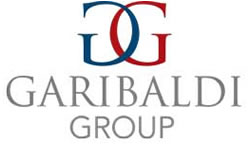Trees and landscapes have been valued since humans were given gardens for food and enjoyment. Once people determined how to harvest seeds, how to plant gardens and landscapes, and how to relocate trees and plants, then decisions about what to use and what not to use began to set values for plants. It is this author's opinion that these practices logically date back to the beginning of history. Therefore, the values of these trees and landscapes should be well defined and based on a set standard that is widely accepted. In practice, this is not the situation. Depending on the scenario, or the regulation, or the contract, valuing the 'Green Assets™' of a property can show very disparate results.
The usual scenarios for valuations of trees and landscapes occur when landscape items have been damaged, when a person or entity wants to remove certain landscape items, or when certain landscape items are being negotiated for sale. In each scenario, the parties involved affect the standard (or method) of valuation. Local regulations may also require a certain valuation standard be used. There is a diversity of valuation methods available, used, and/or recommended by the Green Industry as a whole, and by Tree and Landscape Appraisers as a profession.
The following are scenarios that request, or require, tree and landscape values be determined. These valuation scenarios are not an inclusive list, but are well known, and have been within the experience, of this author.
- Commercial Sale of a Landscape Item (tree, palm or landscape plant)
- Site Clearing Permit
- United States Army Corps of Engineers Wetlands Disturbance Permit
- Joint Agencies Environmental Resources Permit
- Tree Harvesting Permit
- Tree Removal Permit
- Tree Abuse Violation
- Environmental Violation
- Minimum Landscape Standards Violation
- Private Damages Claim
- Court Filed Case for Negligence Damages
- Court Filed Case for Fraud Damages
- Court Filed Case for Personal Injuries Damages
- Eminent Domain Taking
- Insurance Damages Claim
- Internal Revenue Service (United States) Casualty Loss Claim
- Insurable Value Appraisal
- Real Estate Appraisal
- Real Estate Sale
This author is qualified to present the information and opinions in this article based on the following short list of credentials. It is important to share these with the reader to assure that the basis for this information is founded in both theory and in practice. The author has over 25 years of experience in the Green Industry working in the northeastern United States, western Canada, southeastern United States, and the Bahamas. His work experience includes positions as an owner/operator of a tree and landscape services business, a tree climber (Arborist today), a Utility Forester, a Consulting Forester, a Consulting Arborist, a Landscape Designer, an Environmental Consultant and a Land Economist.
He is an International Society of Arboriculture Certified Arborist, a Society of American Foresters Certified Forester, a Landscape Inspectors Association of Florida Certified Landscape Inspector, a Certified Xeriscape Contractor, an American Society of Consulting Arborists Member, and a Council of Tree and Landscape Appraisers Registered Tree and Landscape Appraiser. He was inducted into membership of the Lambda Alpha Honorary Land Economics Society in 1997 for his work in setting and defending values for trees and landscapes.
The author holds a Master of Science degree in Forest Economics, a Master of Business Administration degree in Organizational Management, a Bachelor of Science degree in Resources Management, and an Associate of Science degree in Natural Resources Conservation. His continuing education and teaching includes work as an Instructor and as an Associate Professor for Florida Atlantic University, University of South Florida, University of Central Florida, and Miami-Dade College. The author teaches both theory and field practice classes for a range of Green Industry topics. The consulting firm currently owned by the author was developed to be an expert resource for tree and landscape advice internationally.
Based on these credentials, and the fact that approximately 500 million US dollars worth of tree and landscape values have been determined and defended by this author to date in his career, the information shared in this article should be disseminated and debated internationally by the Green Industry that depends on the public value, and public perception, of trees and landscapes for it's existence.
The lack of consistency in valuing trees and landscapes, termed 'Green Assets™' by this author, does not lessen the importance of setting these values. The valuation of Real Estate, of buildings and structures and homes, of vehicles, and of human life, is still debated by professionals involved in setting those values. Conflicting values are seen for more than just tree and landscape values. Society will continue to change priorities, change attitudes, and change the economic basis for values. The need to produce and successfully defend these values will continue to be required. It is time to confirm more widely accepted standardization for the valuation of trees and landscapes, not just in the United States, but internationally.
The values of Real Estate, real property, do not rest solely on the land and structures and physical (built or designed) improvements. The trees and landscape are real property items that should now each time be determined as professionally as the rest of the items that make up the Real Estate for a property. The ability to value a mature tree, for example a 25 foot overall height Live Oak, as being replaced by a 12 foot overall height Mahogany valued at $250 US installed price for regulatory tree replacement value, or as an appraised value of $5,200 US for a negligence damage claim, leaves most people with many questions unresolved and much anxiety related to what is the actual value of the particular tree (is it $250 or $5,200?).
In practice, if a building needs to be removed from a property to allow for new construction, is it still valued at a full appraised Real Estate value in the sale of the property, even if the intent is to destroy it? Some Real Estate Appraisers state that it is still considered with the Real Estate, but may not provide as high a contributory value as if it were to remain as part of the intended property uses. The professional opinion of each Real Estate Appraiser may not be in agreement for the value added for a building that is to be destroyed. It is the same in tree and landscape Appraisals of properties where a tree will be removed for development, or was destroyed by a natural disaster. Yet, even with divergent opinions between Real Estate Appraisers for the same property scenario, Real Estate Appraisals are an accepted and widely used standard for valuation of Real Estate. In fact, doing an Appraisal is the standard practice.
Valuing any asset requires training, skill, and objectivity. Currently, there is no licensing required for Tree and Landscape Appraisers in Florida where this author does much of his practice. There are regulatory requirements for other credentials, licenses, and/or certifications to be held to perform tree and landscape Appraisals in some municipalities and/or counties within Florida, but not an overall State License. There is a requirement for a State License to be a Real Estate Appraiser. One municipality in south Florida requires that all existing trees and palms be appraised by an ISA Certified Arborist to determine the value required for mitigation of any of these items to be removed. Another requires only one tree a minimum of 16 feet overall height for each tree removed. In many municipalities a licensed Surveyor is required to determine the location, size, type and required characteristics to set a mitigation value for each tree and/or protected plant on the property.
Regulation is not the most consistent or best answer economically for determining asset values. The marketplace is where most values are best determined. The marketplace is most reflective of the will of the consumer, which is considered the will of the public. In the marketplace, the value of trees and landscapes are set as prices for sale. The same species, and/or size of a tree or plant may not be consistent from one country to the next, based on local conditions, availability, and level of use, but the market sets the value in each sale transacted.
In the Green Industry there are 3 market segments that make up the marketplace. There is the wholesale market segment (primary market), the retail market segment (secondary market), and a collected market segment (tertiary market). Prices of landscape items are not consistent between the three market segments because of the position, costs and time involved for each. The wholesale market segment is primary because this is where the base of supply is for generating landscape plants for all market segments. The retail market is secondary because it sells direct to the end user; the one who plants landscape items on their property. The collected market is tertiary because it involves the negotiated sale of a landscape item that is located on one property, for relocation and establishment onto another property where it is desired.
In future articles, the three market segments for the Green Industry will be detailed, with the uses and deficits of each as a basis for setting tree and landscape values explained. Then explanations and examples for each of the 19 valuation scenarios will be presented for consideration by readers. Finally, this author's reasons for the most defensible valuation methods will be presented for consideration by the Green Industry internationally.
More standardization (and validation) in the valuation of 'Green Assets™' is necessary for the growth and reputation of the Green Industry. It is this author's intention to help that occur within his lifetime.











